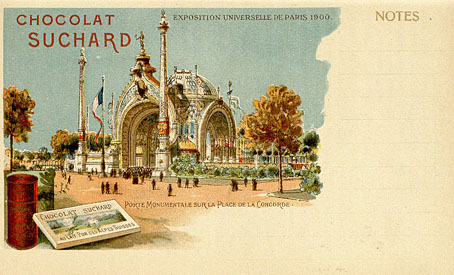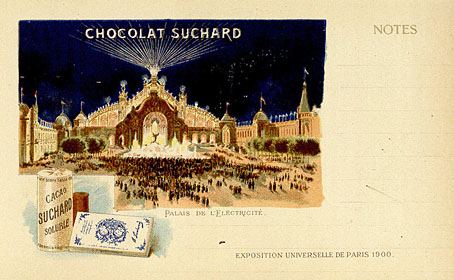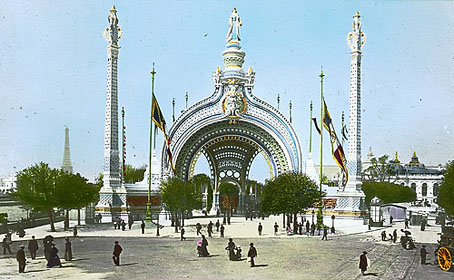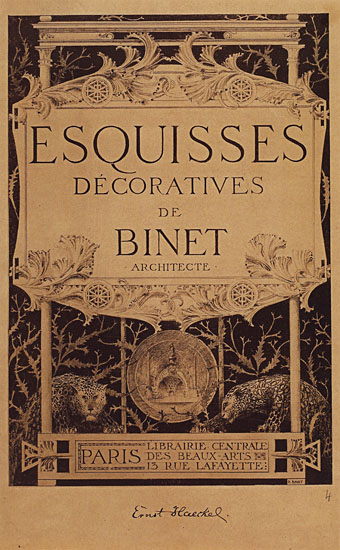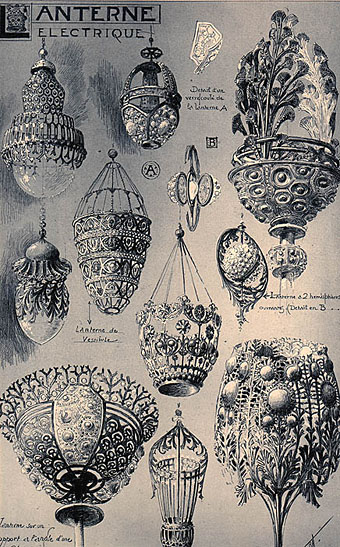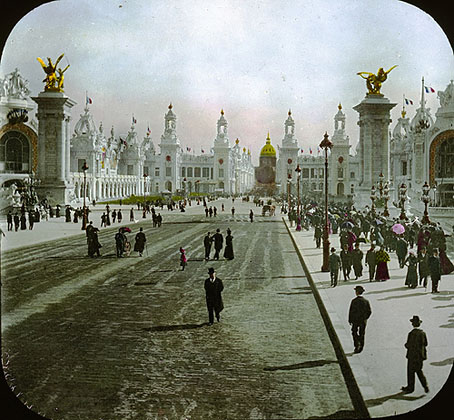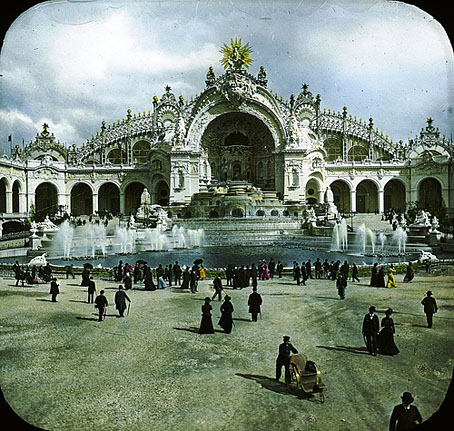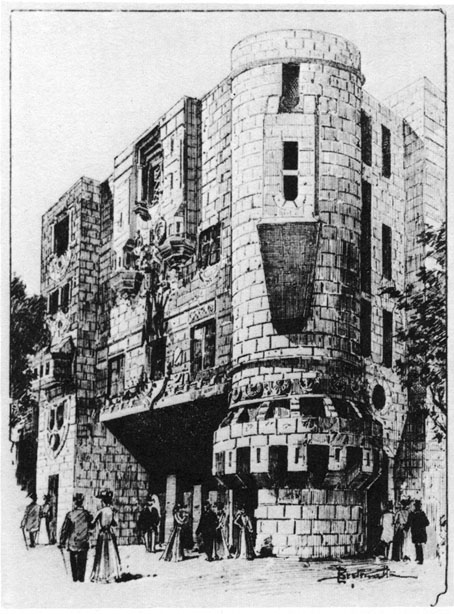
The only place of amusement which was an unqualified success was Le Manoir a l’Envers (The Upside-Down Manor). One entered this building through the roof. The furniture was suspended in the air and in the drawing-room people could walk round a chandelier whose lamps illuminated their feet; through the ventilator holes of the cellar there was a view of the surrounding district.
Philippe Jullian, The Triumph of Art Nouveau (1974).
A slight return to the Paris Exposition Universelle of 1900; don’t think you escape so easily. Complaints will be referred to the word “obsessions” at the top of this page.
To date this is the only decent picture I’ve seen of the Upside-Down Manor and I’ve yet to find a credit for the architect. This seems surprising considering Philippe Jullian’s remarks about the success of the attraction but something of this nature wouldn’t feature prominently in the official guides or catalogues. Most of the printed matter produced for the exposition exudes the high seriousness of nations posturing and preening before each other, frivolities and entertainments were pushed to the margins.
For more upside-down houses, go here.
Previously on { feuilleton }
• Suchard at the Exposition Universelle
• Esquisses Décoratives by René Binet
• Le Palais de l’Optique, 1900
• Exposition Universelle films
• Exposition jewellery
• Exposition Universelle catalogue
• Exposition Universelle publications
• Exposition cornucopia
• Return to the Exposition Universelle
• The Palais Lumineux
• Louis Bonnier’s exposition dreams
• Exposition Universelle, 1900

